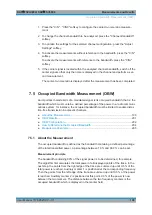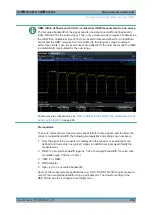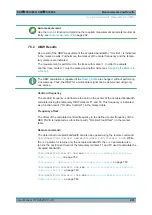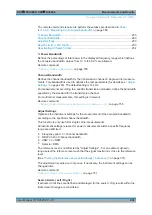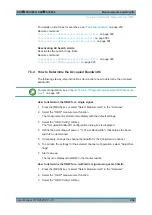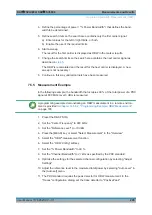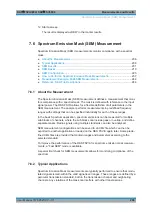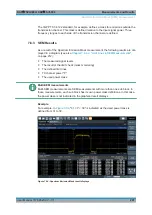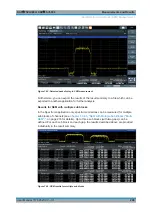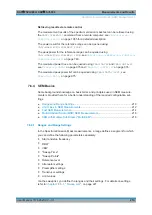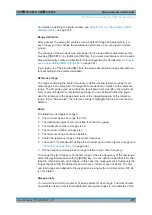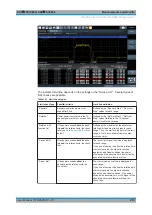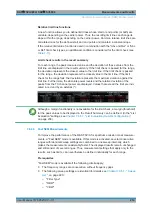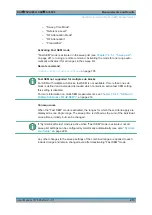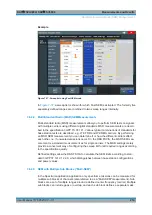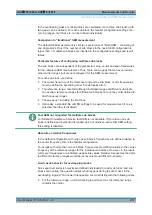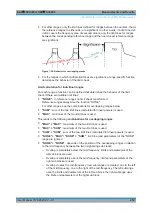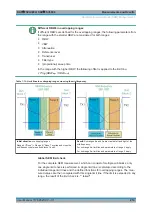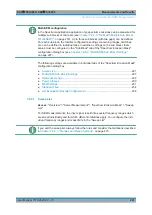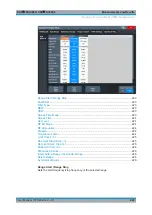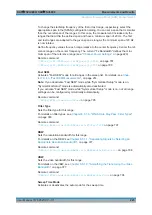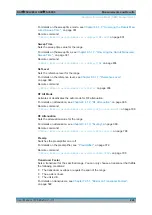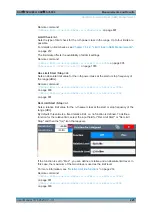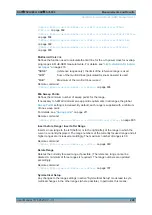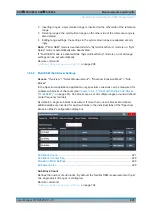
Measurements and Results
R&S
®
FSVA3000/ R&S
®
FSV3000
213
User Manual 1178.8520.02 ─ 01
The indicated limit line depends on the settings in the "Sweep List" . Several types of
limit checks are possible:
Table 7-11: Limit check types
Limit check type
Pass/fail criteria
Limit line definition
"Absolute"
Absolute power levels must not
exceed limit line
Defined by the "Abs Limit Start" / "Abs Limit
Stop" values for each range
"Relative"
Power deviations relative to the TX
channel power must not exceed limit
line
Defined by the "Rel Limit Start" / "Rel Limit
Stop" values (relative to the TX channel
power), fixed for each range.
"Relative with
function f(x)"
If the power exceeds
both
the abso-
lute
and
the relative limits, the check
fails (see
below)
Defined by the maximum of the absolute or
relative start and stop limit values for each
range. Thus, the start or stop point of the limit
range, or both, are variable (since the maxi-
mum can vary).
"Abs and Rel"
If the power exceeds
both
the abso-
lute
and
the relative limits, the check
fails.
The less strict (higher) limit line is displayed
for each range.
If you use a function to define the relative limit
start or stop value, the signal is checked
against an additional condition: the power
must exceed the absolute limit, as well as the
absolute and relative function values.
"Abs or Rel"
If the power exceeds
either
the
absolute
or
the relative limits, the
check fails.
The stricter (lower) limit line is displayed for
each range.
If you use a function to define the relative limit
start or stop value, the signal is checked
against an additional condition: if the power
exceeds the absolute limit, or the higher of the
absolute and relative function values, the
check fails.
Spectrum Emission Mask (SEM) Measurement

